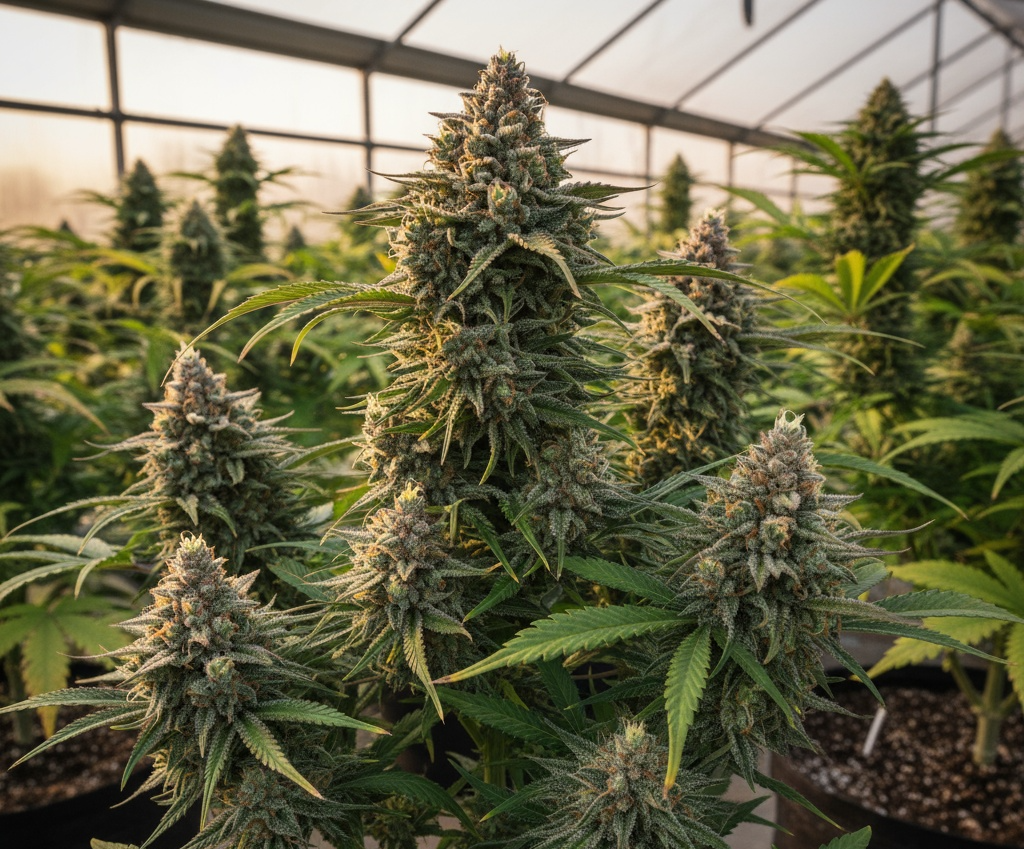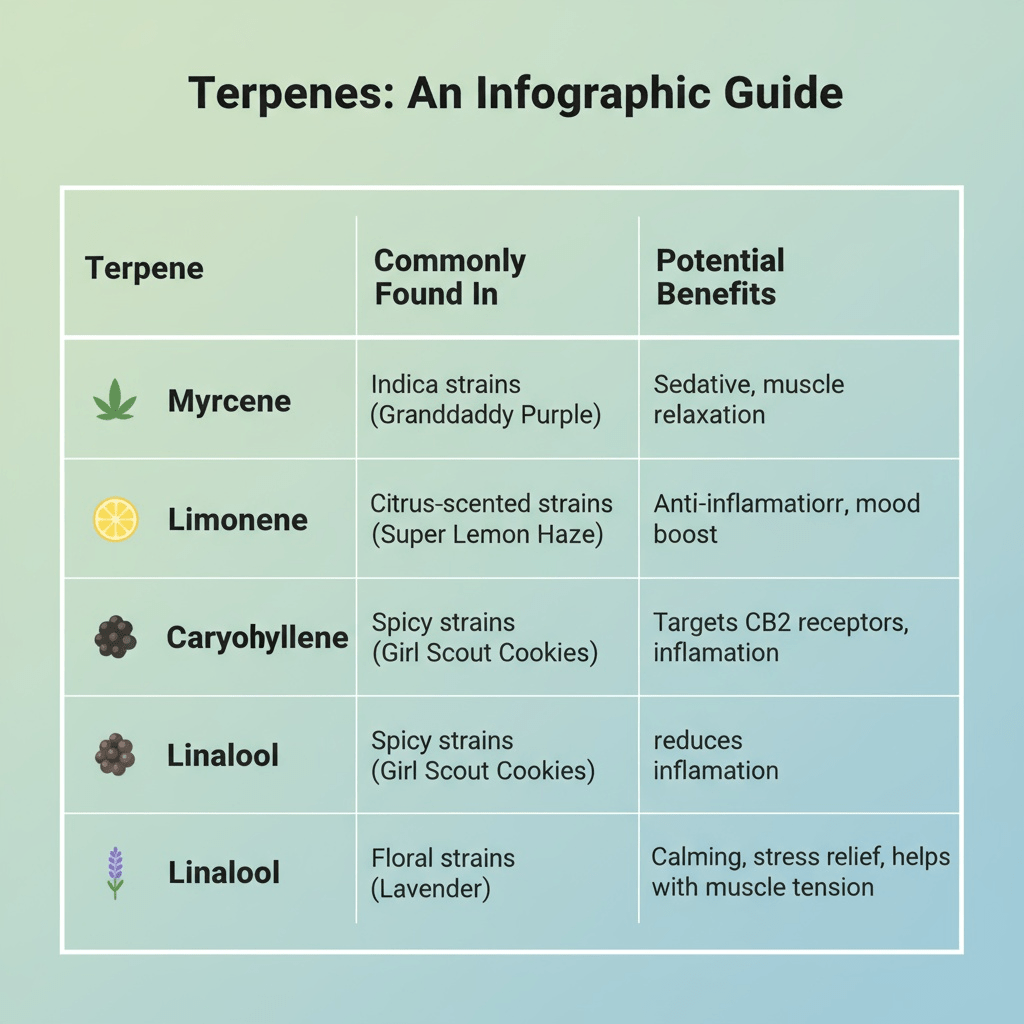Living with chronic pain can feel like a constant uphill battle, from restless nights and fatigue to the frustration of treatments that only bring temporary relief. Millions of Americans face this reality every day. But growing research shows that medical marijuana for chronic pain offers a safe, natural way to ease discomfort, reduce inflammation, and improve daily function without the harsh side effects of opioids.
At LeafyRX, we make it simple to explore whether medical cannabis could help you manage your pain and regain control of your life. Connect online with a licensed medical professional who understands your condition and can guide you through the process, all from the comfort of your home.
Understanding Chronic Pain
Chronic pain is one of the most common long-term health challenges in the United States, affecting over 50 million adults, which is about 1 in 5 people. Unlike temporary pain that fades as an injury heals, chronic pain lasts for three months or longer, often continuing even after the original cause has resolved. However, studies published by the NIH and Harvard Medical School confirm that medical cannabis can reduce pain intensity and improve sleep.
What Chronic Pain Feels Like
For some, chronic pain is a constant ache or stiffness in the back, neck, or joints. For others, it’s sharp, shooting, or burning sensations that come and go. It can interfere with sleep, focus, mood, and mobility, gradually impacting both physical and emotional well-being.
Why It’s a Serious Health Issue
Beyond the discomfort, chronic pain is linked to depression, anxiety, and reduced quality of life. Many people turn to prescription painkillers, but long-term use can lead to dependence or other side effects. That’s why more patients and doctors are turning toward medical cannabis as a safer, holistic option for lasting relief.
How Chronic Pain Affects the Body and Mind
Chronic pain doesn’t just affect the part of your body that hurts. It can take a toll on your entire system, including your nervous system, immune response, and mental health. Over time, ongoing pain can actually change the way your brain and nerves process pain signals, making discomfort feel even more intense.
The Body’s Response
When pain persists for months, your body remains in a constant “alert” mode. The nervous system keeps sending pain messages even when there’s no real danger. This can cause:
- Muscle tension and stiffness
- Inflammation that worsens pain
- Fatigue and disrupted sleep
- Weakened immune function
This continuous stress can make it harder for your body to heal naturally.
The Mind-Body Connection
Living with daily pain often leads to emotional strain. Many people experience:
- Anxiety or depression
- Irritability and frustration
- Difficulty concentrating
- Social withdrawal or isolation
These emotional effects can make the pain feel even worse, creating a difficult cycle that’s tough to break with traditional treatments alone.

Science Behind Cannabis and Pain Relief
To understand why cannabis can be so effective for chronic pain, it helps to look at how it works inside the body. Medical marijuana influences several biological systems that control pain, inflammation, and emotional response, all of which are key to long-term relief.
Endocannabinoid System (ECS): Your Body’s Balance Network
Discovered in the 1990s, the endocannabinoid system (ECS) plays a vital role in maintaining balance, or homeostasis, in the body. It helps regulate many functions that affect pain perception, including:
- Inflammation control
- Nerve signaling
- Mood and stress response
- Sleep and immune function
When your body experiences chronic pain, the ECS may become overactive or depleted, making it harder to manage pain naturally. That’s where medical cannabis comes in.
Cannabinoids and Their Role
The cannabis plant contains over 100 cannabinoids, but the two best-known are THC and CBD. These compounds mimic the body’s own endocannabinoids and interact with ECS receptors to restore balance.
- THC binds mainly to CB1 receptors in the brain and spinal cord, blocking pain signals before they reach conscious awareness.
- CBD interacts with CB2 receptors in immune cells, reducing inflammation and helping the body recover from injury or stress.
Together, these cannabinoids can modulate both the perception and source of pain, a dual effect few traditional medications can achieve.
Anti-Inflammatory Effects
Chronic pain often stems from inflammation, whether in the joints (arthritis), nerves (neuropathy), or muscles (fibromyalgia). Studies have shown that cannabinoids can suppress inflammatory cytokines, chemicals that worsen pain and swelling.
This means cannabis doesn’t just hide the pain, but it also helps reduce the inflammation that causes it.
Neuropathic Pain and Cannabis
One of the toughest types of pain to treat is neuropathic pain, which results from damaged or overly sensitive nerves. Traditional medications like gabapentin or antidepressants don’t always work.
However, cannabis appears to be particularly effective for neuropathic pain because cannabinoids calm overactive nerve signals. In several clinical studies, patients using medical cannabis reported significant drops in pain intensity and improved quality of sleep compared to placebo groups.
Clinical Research Highlights
Here’s what major studies have found:
- A 2017 National Academies of Sciences review concluded that there is “conclusive or substantial evidence that cannabis is effective for chronic pain in adults.”
- A 2020 Harvard Health analysis found that patients using cannabis often reduced or discontinued their opioid use within six months.
- Research published in the Journal of Pain showed that medical cannabis users experienced a 64% reduction in opioid use and reported a better quality of life overall.
Science supports what many patients already know: cannabis can reduce pain intensity, calm inflammation, and improve overall well-being, all while minimizing reliance on addictive or harsh medications.
Common Types of Chronic Pain That Qualify for Medical Marijuana
Not all pain is the same, and not everyone experiences it the same way. Chronic pain can come from many sources, whether it’s nerve damage, inflammation, injury, or illness. Thankfully, medical marijuana has been shown to help relieve several major types of long-term pain, making it one of the most widely approved qualifying conditions across the U.S.
Below are some of the most common types of chronic pain that may qualify for a medical marijuana card.
1. Arthritis and Joint Pain
Arthritis affects more than 58 million adults in the U.S., causing stiffness, swelling, and aching joints that limit mobility.
Medical cannabis can ease arthritis symptoms by reducing inflammation in the joints and improving overall comfort.
- THC helps dull pain perception.
- CBD reduces inflammatory responses in joint tissue.
- Many patients report better sleep and less stiffness in the morning.
Studies have found that CBD topicals and low-THC tinctures are especially effective for localized joint pain and swelling.
2. Neuropathic Pain (Nerve Pain)
Neuropathic pain occurs when nerves are damaged or malfunction, often described as burning, tingling, or shooting sensations.
Traditional painkillers often don’t work well for nerve pain, but cannabis interacts directly with the nervous system, calming overstimulated pain signals.
- Helps reduce sensitivity in damaged nerves
- Improves sleep quality and restfulness
- May prevent flare-ups caused by inflammation
Research from the Journal of Pain shows patients using cannabis experienced a 40-50% improvement in nerve pain symptoms.
3. Fibromyalgia
Fibromyalgia is a complex pain disorder involving widespread muscle pain, fatigue, and tenderness. It’s often linked to imbalances in how the brain processes pain.
Medical marijuana can help reset pain sensitivity and promote relaxation by interacting with the endocannabinoid system.
Patients often report:
- Less pain and muscle tension
- Improved sleep and mood
- Reduced need for prescription drugs
According to a 2019 study in Pain Medicine, fibromyalgia patients who used cannabis had significant symptom improvement and reduced anxiety compared to non-users.
4. Back and Spinal Pain
Chronic back pain is one of the most common reasons Americans seek medical marijuana. Whether it’s from a past injury, herniated disc, or degenerative condition, cannabis can provide both muscle relaxation and anti-inflammatory benefits.
- THC can block pain signals from the spine to the brain.
- CBD may relieve pressure on nerves and reduce inflammation in spinal tissues.
This combination helps patients move more freely and perform daily activities with less discomfort.
5. Migraine and Headache Disorders
Migraine pain can be debilitating, often accompanied by nausea, light sensitivity, and fatigue. Medical marijuana, especially strains high in CBD and low in THC, can reduce the frequency and intensity of migraines by relaxing blood vessels and calming overactive brain signals. Some patients find that vaporized cannabis or fast-acting tinctures offer near-immediate relief during migraine onset.
6. Post-Surgical or Injury-Related Pain
After major surgeries or injuries, pain can linger for months or even years.
Medical cannabis helps patients recover by easing pain without the dependency risks associated with opioids.
- Reduces inflammation and swelling
- Promotes better rest and healing
- Can complement physical therapy for faster recovery
7. Autoimmune and Inflammatory Pain
Conditions like lupus, Crohn’s disease, and multiple sclerosis (MS) can cause chronic inflammation that leads to persistent pain.
Cannabis has shown promising results in reducing autoimmune flare-ups and relieving associated discomfort.
- CBD and THC both suppress overactive immune responses
- Patients often experience fewer flare-ups and improved daily energy
Most U.S. states recognize chronic pain as a qualifying condition for a medical marijuana card. Whether caused by arthritis, nerve damage, or another chronic illness, cannabis offers a personalized and natural way to manage symptoms and improve overall quality of life.

See if You Qualify for a Medical Marijuana Card →
Types of Medical Marijuana Products for Pain Relief
When it comes to chronic pain, there isn’t a one-size-fits-all solution. Medical marijuana comes in many forms, each offering different benefits depending on the type, location, and severity of pain you’re dealing with.
Knowing the differences can help patients and doctors create a personalized treatment plan that fits lifestyle, comfort level, and medical goals.
1. Inhalation: Smoking and Vaping
How it works:
When cannabis is smoked or vaporized, cannabinoids like THC and CBD enter the bloodstream through the lungs, offering fast-acting relief, usually within minutes.
Best for:
- Sudden flare-ups of pain
- Neuropathic pain
- Patients who need quick symptom control
Pros:
- Rapid onset
- Easy to control dosage with small inhalations
Cons:
- Effects last only 2-4 hours
- Smoking may irritate lungs; vaporizing is often a gentler alternative
Tip:
Many chronic pain patients prefer low-THC, high-CBD vape oils to reduce inflammation without strong psychoactive effects.
2. Oral Products: Capsules, Edibles, and Tinctures
How it works:
Oral cannabis products must pass through the digestive system before cannabinoids enter the bloodstream, so effects take longer to appear, but they last much longer (up to 8-12 hours).
Best for:
- Persistent or widespread pain
- Overnight relief
- Reducing inflammation throughout the body
Pros:
- Discreet and easy to use
- Long-lasting results
- Consistent dosing
Cons:
- Delayed onset (30-90 minutes)
- Dosing can be tricky for beginners
Tip:
Start with low doses (2.5-5 mg THC) and increase gradually. Look for products that combine CBD and THC for more balanced, sustainable relief.
3. Sublingual Drops and Sprays
How it works:
Placed under the tongue, these are absorbed directly into the bloodstream through mucous membranes, giving faster effects than edibles but longer-lasting results than vaping.
Best for:
- Moderate to severe pain
- Patients who prefer smokeless, controlled dosing
Pros:
- Quick onset (15-30 minutes)
- Easy to measure dosage
- No smoke or irritation
Cons:
- Some find the taste unpleasant
- Requires consistent dosing for best results
Tip:
Many doctors recommend tinctures for first-time medical cannabis patients because of their reliability and ease of use.
4. Topicals and Transdermal Patches
How it works:
These are applied directly to the skin over painful areas. They deliver cannabinoids locally without entering the bloodstream, providing targeted relief without psychoactive effects.
Best for:
- Joint pain (arthritis, tendonitis)
- Muscle soreness or injury recovery
- Localized neuropathic pain
Pros:
- Non-intoxicating
- Easy to apply as needed
- May reduce inflammation in specific areas
Cons:
- Not ideal for deep or widespread pain
- Effects may vary depending on product formulation
Tip:
Topicals are often used alongside other forms (like tinctures or edibles) for a complete pain-management approach.
5. Cannabis Oils and Concentrates
How it works:
Highly concentrated extracts can be taken orally, mixed into food, or vaporized for strong, long-lasting effects.
Best for:
- Severe, treatment-resistant pain
- Patients with high tolerance or advanced conditions
Pros:
- Potent relief
- Long duration (6-10 hours)
- Customizable cannabinoid ratios
Cons:
- Easy to overconsume if dosing isn’t precise
- Should be used under medical supervision
Tip:
Always choose lab-tested products from licensed dispensaries to ensure purity and accurate cannabinoid content.
Choosing What Works Best for You
Every patient’s experience is unique. Factors like metabolism, pain type, and tolerance level influence how cannabis works in your body.
Working with a qualified medical marijuana doctor can help you identify the best product type, strain, and dosage for your needs. Many patients find success by combining two or more forms, for example, using a topical cream for daytime pain and a tincture at night for sleep.
Understanding THC:CBD Ratios and Strain Selection for Pain Relief
When it comes to managing chronic pain with medical marijuana, not all cannabis products work the same way. The ratio of THC to CBD and the strain type play a big role in how effective your relief will be and how comfortable your experience feels.
Learning these basics helps patients make informed choices with their doctor or dispensary specialist.
THC:CBD Ratios Explained
THC (Tetrahydrocannabinol) and CBD (Cannabidiol) are the two most active compounds in cannabis. They work together but produce different effects.
The THC:CBD ratio determines how psychoactive and pain-relieving a product will be.
Here’s a simple breakdown:
| Ratio Type | What It Means | Best For | Effects |
| 1:0 (High THC) | THC only, little to no CBD | Severe pain, nausea, muscle spasms | Strong euphoria (“high”), powerful pain relief |
| 1:1 (Balanced) | Equal THC and CBD | Moderate pain, inflammation, anxiety | Gentle relaxation, mild euphoria, steady pain control |
| 1:2 or 1:3 (CBD-dominant) | More CBD than THC | Mild pain, daily use | Clear-headed relief, anti-inflammatory, minimal psychoactive effects |
| 20:1 (High CBD) | Very little THC | Sensitive patients, inflammation | Non-intoxicating, suitable for daytime relief |
Tip: Many patients find that a balanced ratio (1:1 or 2:1) provides the best mix of comfort and clarity, strong pain relief without feeling overly “high.”

Choosing the Best Strains for Chronic Pain
Cannabis strains are often categorized into three main types, each with unique effects that can influence pain, energy, and mood.
1. Indica-Dominant Strains
- Known for relaxing, body-heavy effects
- Great for nighttime use or when pain prevents sleep
- Commonly used for: muscle spasms, arthritis, and nerve pain
Popular strains:
- Granddaddy Purple
- Northern Lights
- Bubba Kush
2. Sativa-Dominant Strains
- Uplifting and energizing
- Best for daytime pain relief without drowsiness
- Commonly used for: migraines, mild neuropathy, mood-related pain
Popular strains:
- Sour Diesel
- Jack Herer
- Green Crack
3. Hybrid Strains
- A mix of indica and sativa genetics
- Offer balanced effects for around-the-clock pain management
- Great for patients seeking both relaxation and functionality
Popular strains:
- Blue Dream
- Girl Scout Cookies (GSC)
- OG Kush
The Role of Terpenes in Pain Relief
Terpenes are the natural compounds that give cannabis its aroma and flavor, but they also influence how cannabinoids affect the body. Some terpenes have their own pain-fighting properties.

Understanding terpenes helps patients choose strains that not only control pain but also improve mood, relaxation, and sleep quality.
Research and Evidence Supporting Medical Marijuana for Chronic Pain
Over the past two decades, dozens of studies have examined how cannabis and its compounds affect chronic pain. The results are promising, suggesting that medical marijuana can provide meaningful pain relief, reduce inflammation, and even lower dependency on opioids for many patients.
Scientific Consensus: What Experts Say
In 2017, the National Academies of Sciences, Engineering, and Medicine (NASEM) released one of the most comprehensive reports on cannabis health effects. After reviewing over 10,000 scientific studies, the report concluded:
“There is conclusive or substantial evidence that cannabis or cannabinoids are effective for the treatment of chronic pain in adults.”
— The Health Effects of Cannabis and Cannabinoids (NASEM, 2017)
This finding was a turning point. It officially recognized cannabis as a legitimate therapeutic option for people living with long-term pain.
Key Studies on Pain Management
1. Reduction in Neuropathic and Musculoskeletal Pain
A 2015 study published in The Journal of Pain found that patients using vaporized cannabis experienced a 30% average reduction in neuropathic pain compared to placebo groups.
Another review in Frontiers in Pharmacology (2020) showed cannabinoids can modulate pain signaling pathways and reduce inflammation in conditions like fibromyalgia, arthritis, and back pain.
2. Fewer Opioid Prescriptions and Overdose Deaths
A JAMA Internal Medicine study (2014) reported that states with legal medical cannabis programs had 25% fewer opioid overdose deaths on average.
More recent data from Health Economics (2021) confirmed that access to medical marijuana correlates with lower opioid prescribing rates and fewer hospital admissions related to painkiller use.
3. Improved Quality of Life
According to a 2022 study in Pain Medicine, nearly 6 in 10 medical cannabis patients reported “significant improvement” in daily functioning, sleep, and mood after switching from or reducing opioid medications.
Patients with chronic conditions like fibromyalgia and migraines reported better pain control and fewer side effects compared to traditional pain meds.
How Cannabis Compares to Traditional Painkillers
| Treatment Type | Effectiveness | Risks / Side Effects |
| Opioids | Strong pain relief | High risk of addiction, tolerance, constipation, overdose |
| NSAIDs (Ibuprofen, Naproxen) | Moderate relief for inflammation | Risk of ulcers, heart disease, kidney damage |
| Antidepressants / Anticonvulsants | Mild-to-moderate pain relief | Fatigue, dizziness, mood changes |
| Medical Marijuana | Mild-to-strong relief depending on strain and dose | Drowsiness, dry mouth, mild dizziness (low addiction risk) |
Many patients report that cannabis offers balanced, sustainable relief, reducing pain intensity without the heavy sedation or dependency risks of prescription opioids.
Limitations and Ongoing Research
While the evidence is strong, researchers agree that more large-scale, long-term clinical trials are needed to:
- Understand optimal dosage and cannabinoid ratios for specific pain types
- Study effects on different age groups and medical histories
- Examine long-term safety and interactions with other medications
Institutions like Harvard Medical School, NIH, and The Mayo Clinic are actively conducting new studies to explore how cannabinoids influence inflammation, nerve signaling, and chronic pain pathways.
The trend is clear: medical cannabis continues to gain scientific validation as a safer, more holistic tool for pain management.
What This Means for Patients
For people living with persistent pain, these findings offer hope. Cannabis isn’t just a temporary fix, it’s part of a growing shift in modern pain medicine, focusing on natural, personalized care instead of one-size-fits-all prescriptions.
States That Approve Medical Marijuana for Chronic Pain
Medical marijuana laws across the U.S. vary widely, creating confusion for patients struggling with chronic pain. While cannabis remains illegal at the federal level, most states have implemented medical marijuana programs that allow individuals with qualifying conditions, including chronic pain, to access cannabis-based treatments legally.
Is Chronic Pain a Qualifying Condition?
Yes. Chronic pain is one of the most commonly approved qualifying conditions for medical marijuana nationwide. As of 2025, more than 35 states recognize chronic or severe pain as an eligible condition for medical cannabis use. Depending on state regulations, it may be referred to as:
- “Chronic pain” (e.g., California, Arizona, New Mexico)
- “Severe or persistent pain” (e.g., New York, Minnesota)
- “Intractable or treatment-resistant pain” (e.g., Oregon, Illinois)
- “Neuropathic pain” (e.g., Florida, Maryland)
Below are a few examples of states that explicitly approve chronic pain as a qualifying condition:
- California – Chronic pain qualifies under the state’s Compassionate Use Act; patients can use cannabis for chronic pain relief when recommended by a physician.
- Florida – Recognizes chronic nonmalignant pain caused by or originating from a qualifying medical condition.
- New York – Approves chronic or severe pain that degrades health and functional capability as an eligible condition.
- Arizona – Lists chronic pain as a qualifying condition if conventional treatments have failed.
- Pennsylvania – Includes “severe chronic or intractable pain” among its 23 qualifying medical conditions.
- Illinois – Approves “chronic pain that is refractory to other medical treatments.”
- New Mexico – One of the first states to include chronic pain in its medical cannabis program.
If you’re unsure whether chronic pain qualifies in your state, check your state-specific regulations or speak to a licensed medical marijuana doctor through LeafyRX’s secure telehealth platform.
Possession and Purchase Limits
Each state determines how much cannabis a medical patient may possess or purchase. Typically, limits range between:
- 1 to 2.5 ounces of usable marijuana, or
- A 30-60-day supply of medical cannabis products (depending on the state)
Some states also permit patients or caregivers to cultivate a limited number of plants at home. For example, Oregon allows up to 6 mature plants, while New Mexico allows up to 12 per household for personal medical use.
Traveling with Medical Marijuana
Keep in mind the following:
- Do not transport cannabis across state lines, even between two legal states, it remains federally illegal.
- Some states, such as Nevada and Oklahoma, have reciprocity programs that honor out-of-state medical marijuana cards.
- Never bring cannabis onto airplanes or federal property, where federal laws still apply.
Federal Law vs. State Protection
Under federal law, cannabis remains a Schedule I controlled substance, categorized alongside heroin and LSD. However, state medical marijuana programs protect qualified patients from prosecution as long as they comply with state laws.
Since the 2013 Cole Memorandum, the federal government has largely taken a hands-off approach toward state-legal medical marijuana programs, though enforcement priorities can shift over time.
Potential Risks and Side Effects of Medical Marijuana
While medical marijuana can offer powerful relief for chronic pain, it’s not completely risk-free. Like any treatment, it can cause side effects, especially if used in high doses or without proper medical guidance. Understanding these risks helps patients use cannabis safely and responsibly.
Common Short-Term Side Effects
Most short-term effects are mild and fade as your body adjusts to cannabis use. These can include:
- Dry mouth and dry eyes
- Mild dizziness or lightheadedness
- Increased heart rate (usually temporary)
- Fatigue or drowsiness
- Heightened appetite (“the munchies”)
- Mild anxiety or confusion (more common with high-THC strains)
These effects are typically short-lived and can often be managed by starting with a low dose and gradually increasing under a doctor’s supervision.
Potential Long-Term Considerations
When used responsibly under medical supervision, cannabis is considered safe for most adults. However, long-term or heavy use may lead to:
- Tolerance: Over time, higher doses may be needed for the same relief.
- Dependence: A small percentage of users (estimated at around 9%) may develop mild psychological dependence.
- Respiratory irritation: Smoking cannabis can irritate the lungs, though vaporizing or using tinctures eliminates this risk.
- Cognitive effects: Long-term high-THC use may affect short-term memory or concentration, especially in younger adults.
For patients using cannabis medically, these risks are typically much lower than those associated with opioids or other prescription painkillers.
Interactions with Other Medications
Cannabis can interact with certain medications that are processed by the liver, such as:
- Blood thinners (e.g., warfarin)
- Sedatives or anti-anxiety medications
- Some antidepressants or antiepileptic drugs
That’s why it’s essential to consult your healthcare provider before adding medical marijuana to your treatment plan. A licensed doctor can help you determine safe dosages and prevent unwanted interactions.
Who Should Use Caution
Medical marijuana may not be recommended for:
- Pregnant or breastfeeding women (due to limited research on safety)
- Individuals under 21 (developing brains are more sensitive to THC)
- Patients with a history of psychosis or severe anxiety (high-THC strains may worsen symptoms)
- People with cardiovascular disease (THC can temporarily raise the heart rate)
For these groups, CBD-dominant or low-THC products may be a safer alternative, offering relief with fewer psychoactive effects.
How LeafyRX Helps You Stay Compliant
Navigating the legal process can feel overwhelming, but LeafyRX simplifies it. Our platform connects patients directly with state-licensed medical marijuana doctors who understand local regulations and ensure compliance every step of the way.
With LeafyRX, you can:
- Book a telehealth appointment with a qualified physician
- Get evaluated for chronic pain or other qualifying conditions
- Receive a medical marijuana recommendation if approved
- Apply for your state medical card quickly and confidently
Take the First Step Toward Relief
Living with chronic pain shouldn’t mean living without hope. Medical marijuana offers a safe, natural, and legal path to better pain management.
Apply for Your Medical Marijuana Card for Chronic Pain

- Alabama
- Alaska
- Arizona
- Arkansas
- California
- Colorado
- Connecticut
- Delaware
- Florida
- Georgia
- Hawaii
- Idaho
- Illinois
- Indiana
- Iowa
- Kansas
- Kentucky
- Louisiana
- Maine
- Maryland
- Massachusetts
- Medical Card Renewal
- Michigan
- Minnesota
- Mississippi
- Missouri
- Montana
- Nebraska
- Nevada
- New Hampshire
- New Jersey
- New Mexico
- New York
- North Carolina
- North Dakota
- Ohio
- Oklahoma
- Oregon
- Pennsylvania
- Rhode Island
- South Carolina
- South Dakota
- Tennessee
- Texas
- Utah
- Vermont
- Virginia
- Washington
- Washington DC
- West Virginia
- Wisconsin
- Wyoming
Frequently Asked Questions
Is chronic pain a qualifying condition for medical marijuana in my state?
In most cases, yes. As of 2025, more than 35 states, including California, Florida, New York, Arizona, and Illinois, recognize chronic or severe pain as a qualifying condition for medical marijuana use. Some states may list it under terms like intractable pain or neuropathic pain.
How do I qualify for medical marijuana if I have chronic pain?
You’ll need a documented medical history showing that your pain has lasted for an extended period (typically 3 months or longer) and hasn’t responded to traditional treatments. A licensed medical marijuana doctor can review your condition and issue a recommendation if you qualify.
Can I use medical marijuana instead of prescription painkillers?
Many patients use medical cannabis as an alternative or supplement to opioids and other pain medications. However, this decision should always be made under medical supervision. Discuss your treatment plan with a qualified doctor to determine what’s safe and effective for you.
Are there side effects of using medical marijuana for pain relief?
Possible side effects include dry mouth, dizziness, fatigue, and temporary changes in concentration or mood. These are usually mild and short-lived. Your doctor can help you find the right dosage and strain to minimize unwanted effects.
How can LeafyRX help me get a medical marijuana card for chronic pain?
LeafyRX connects you with state-certified doctors through a secure online platform. You can book an appointment, get evaluated for chronic pain, and receive your medical marijuana recommendation, all from the comfort of your home.








